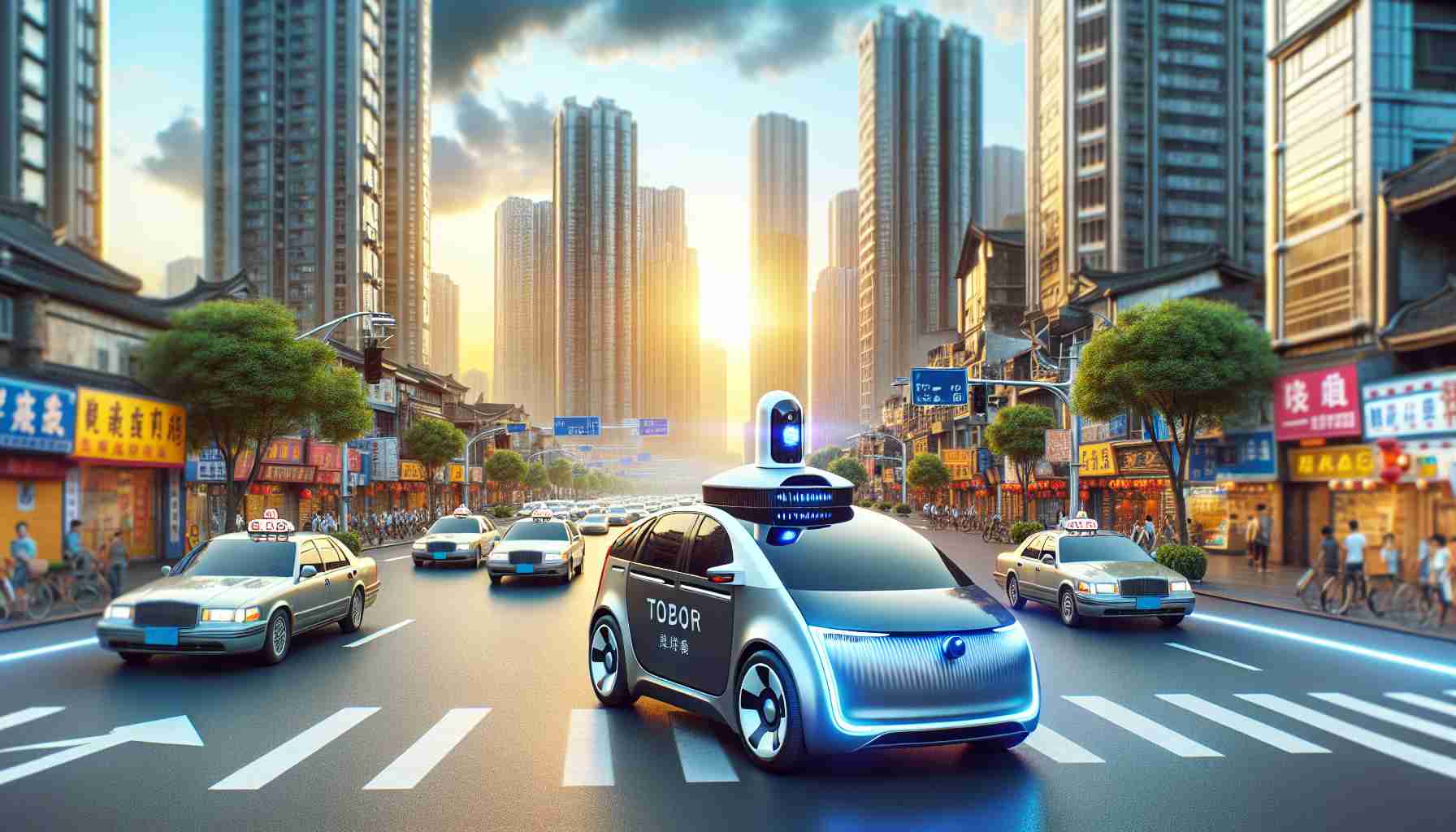In Wuhan, a groundbreaking experiment is changing the landscape of transportation, and it’s leaving traditional taxi drivers uneasy. The city has rolled out an impressive fleet of 400 autonomous taxis, orchestrated by the tech giant Baidu. This initiative has raised alarms among local drivers who fear for their jobs.
Wuhan has established itself as a global frontrunner in the realm of self-driving vehicles, housing the largest operational zone with its extensive fleet. Currently, these autonomous taxis account for only 1% of the total vehicles on the road. However, their attractive pricing strategy is making them a formidable competitor, leading to concerns among human drivers about their financial stability and future.
While Wuhan embraces this technological advance, the United States remains predominantly cautious in its approach. For instance, General Motors decided to halt its self-driving car operations in 2023 after a serious incident involving a pedestrian. This highlights the varying attitudes towards automation in different regions.
As Wuhan continues to innovate and expand its autonomous vehicle program, the question looms large: will traditional taxi drivers adapt, or will they find themselves obsolete in this new digital age? The city’s taxi drivers are bracing for a future that may no longer include their familiar jobs.
Transformative Transportation: Implications Beyond Wuhan
The launch of autonomous taxis in Wuhan, driven by Baidu, represents a significant turning point not only for local transportation but also for global economic structures and societal norms. As cities worldwide evaluate the efficacy and safety of similar technologies, we witness a growing shift in labor dynamics. The fear among traditional taxi drivers is emblematic of a broader concern: how will economies adapt to the rising prevalence of automation?
In addition to job displacement, the rise of autonomous vehicles raises important questions about public infrastructure and urban planning. Cities may need to redesign urban spaces as the demand for parking changes and traffic patterns shift. Furthermore, we could see a decline in the insurance industry related to vehicular accidents, as autonomous systems might reduce the frequency and severity of collisions, thereby impacting the global insurance economy.
The adoption of self-driving vehicles also invites scrutiny regarding environmental impacts. With increased efficiency, autonomous taxis could reduce carbon emissions if integrated with sustainable energy solutions, drastically transforming the mobility landscape. Yet, if reliance on such technologies grows without sustainability in mind, the environmental benefits could be negated through higher overall vehicle counts and resource consumption.
Looking ahead, the long-term significance of projects like Wuhan’s autonomous taxi fleet will likely shape societal interaction with technology and redefine economic relationships in urban settings. As we navigate this transformative period, how we adapt could forge new paths toward a future where human and machine coexist in shared spaces harmoniously, or create a chasm that widens socio-economic divides.
Is Wuhan’s Autonomous Taxi Revolution the Future of Transportation?
Exploring the Rise of Autonomous Taxis in Wuhan
Wuhan, a city that has become synonymous with innovation in transportation, is taking bold steps towards building a future dominated by autonomous vehicles. With 400 autonomous taxis now operational, orchestrated by the tech giant Baidu, the dynamics of urban mobility are undergoing a significant transformation.
Overview of Autonomous Vehicles in Wuhan
Wuhan boasts the largest operational zone for self-driving vehicles globally, signifying its commitment to pioneering transportation technology. Presently, these autonomous taxis represent only 1% of the local vehicle count, indicating the nascent stage of this technology. However, even at this early phase, their competitive pricing is paving the way for widespread adoption, raising eyebrows and concerns among traditional taxi drivers whose livelihoods could be at stake.
Pros and Cons of Autonomous Taxis
Pros:
– Cost Efficiency: Autonomous taxis offer lower fares compared to traditional taxis, which could lead to increased ridership.
– Safety Improvements: With advanced sensors and AI technology, self-driving taxis can potentially reduce traffic accidents caused by human error.
– Reduced Traffic Congestion: Increased use of autonomous vehicles may optimize urban traffic flow and reduce congestion.
Cons:
– Job Displacement: The rise of autonomous taxis poses a direct threat to traditional taxi drivers, leading to fears of significant job losses.
– Technological Dependence: As cities become more reliant on automated systems, there may be vulnerabilities related to cybersecurity and system failures.
– Regulatory Challenges: Balancing innovation with public safety will require robust regulations and oversight which may not keep pace with technological advancements.
Market Analysis and Future Trends
As cities around the world evaluate the implementation of autonomous vehicles, the response in Wuhan could serve as a crucial case study. The current momentum suggests that other regions might follow suit, albeit at a more measured pace, given the caution exhibited in countries like the United States. For instance, General Motors’ decision to withdraw from its self-driving initiatives after a serious incident underscores the challenges of integrating such technologies safely.
Predictions indicate that as technology advances and public concerns are addressed, the percentage of autonomous taxis could significantly increase in urban landscapes across China and globally. Moreover, innovations in AI and machine learning promise to enhance the functionalities of these vehicles, potentially expanding their use beyond just passenger transport to include logistics and delivery services.
Security and Sustainability Aspects
With the rise of autonomous vehicles, security becomes paramount. Ensuring robust cybersecurity measures are in place is crucial to prevent potential hacking or manipulation of self-driving systems. Moreover, sustainability plays a key role in the design of these vehicles; many companies are focusing on electric autonomous taxis aimed at reducing carbon footprints and promoting eco-friendly urban transport.
Conclusion
Wuhan’s aggressive push into the realm of autonomous taxis marks a pivotal moment in the evolution of transportation. While this technological shift brings promising benefits, it also introduces challenges that will need careful navigation. As traditional taxi drivers face an uncertain future, the broader implications of this movement could reshape city infrastructures and societal dynamics related to transportation.
For more in-depth information about the future of transportation, you can visit Baidu’s official site.













